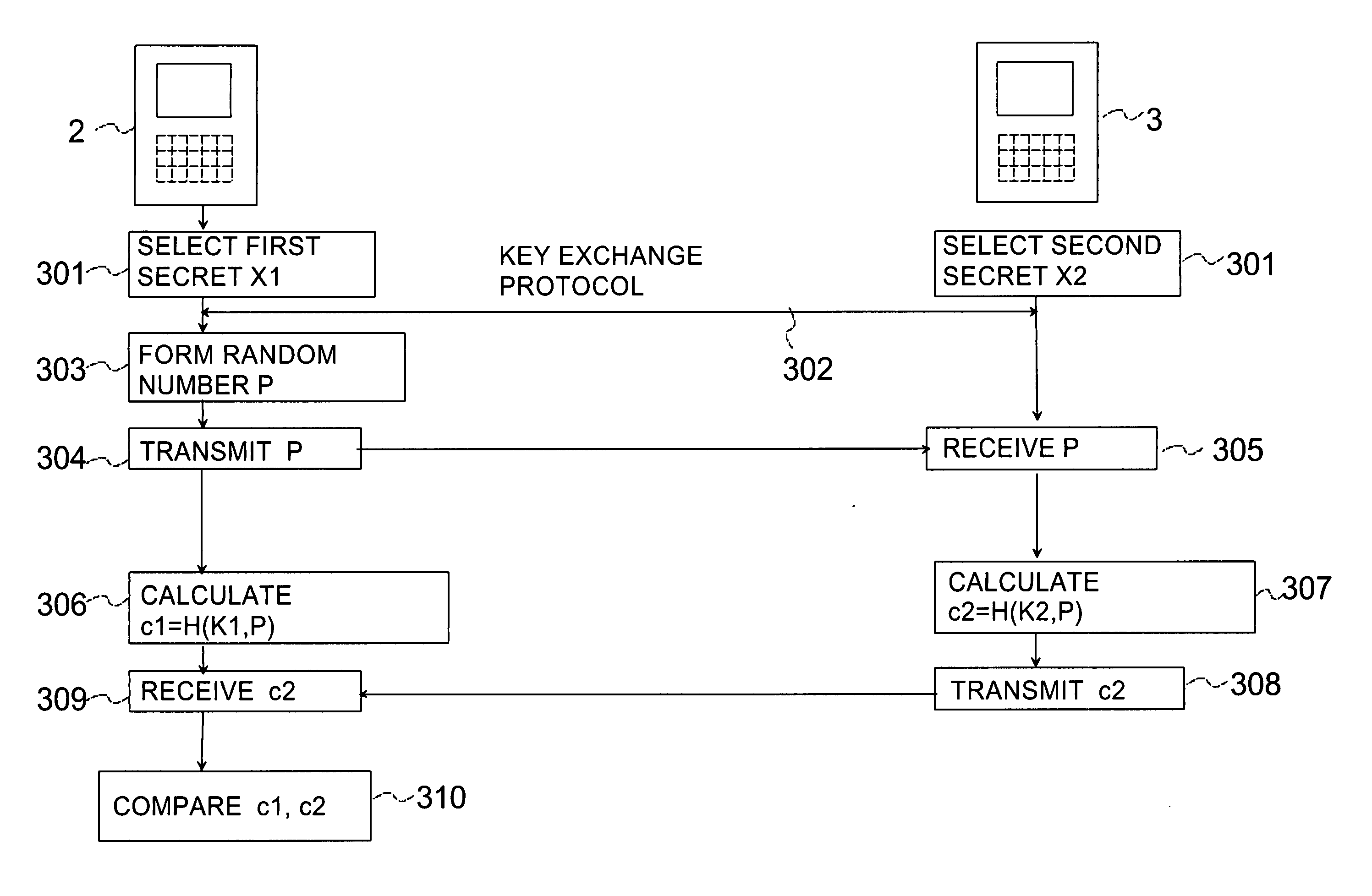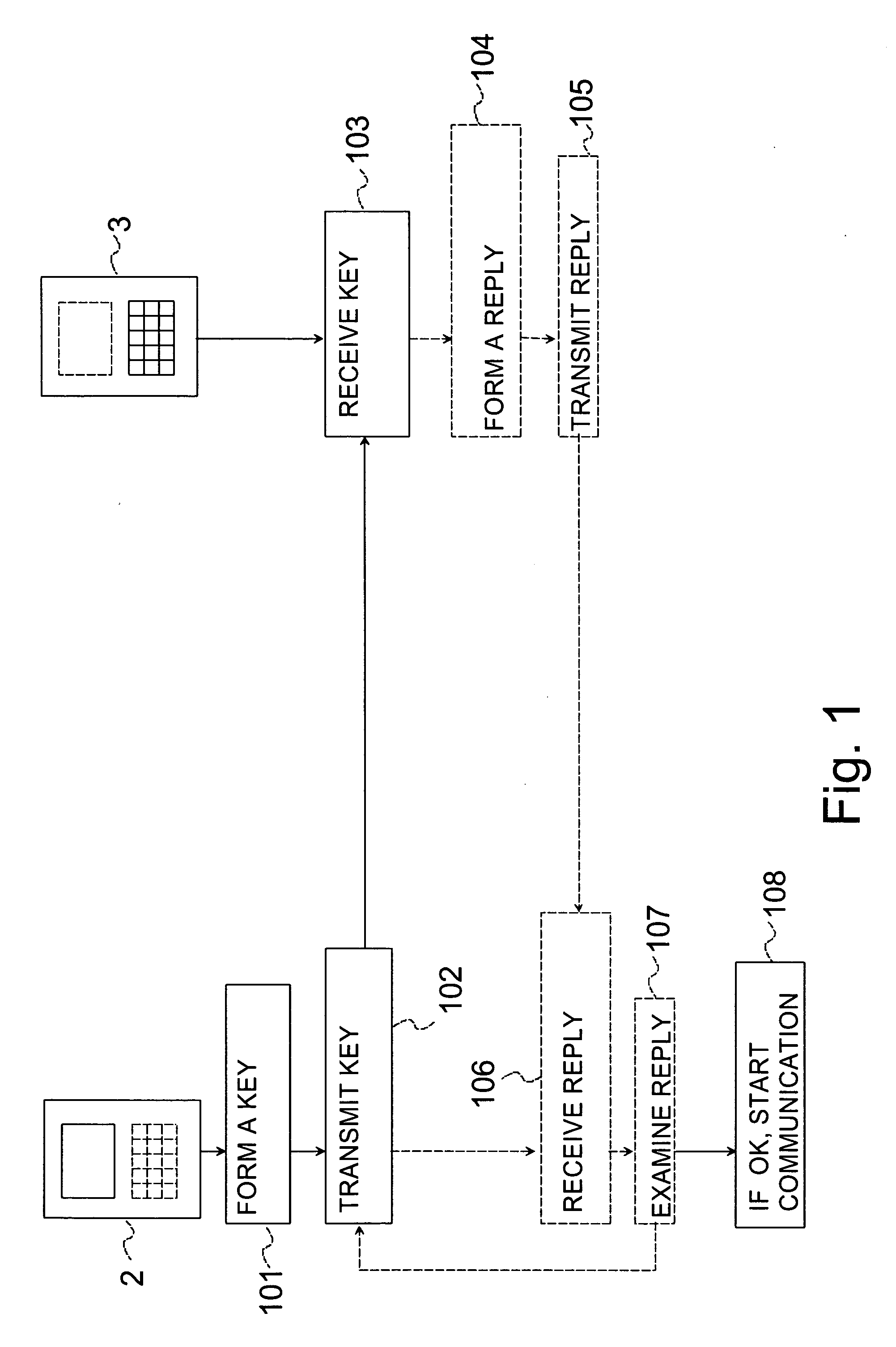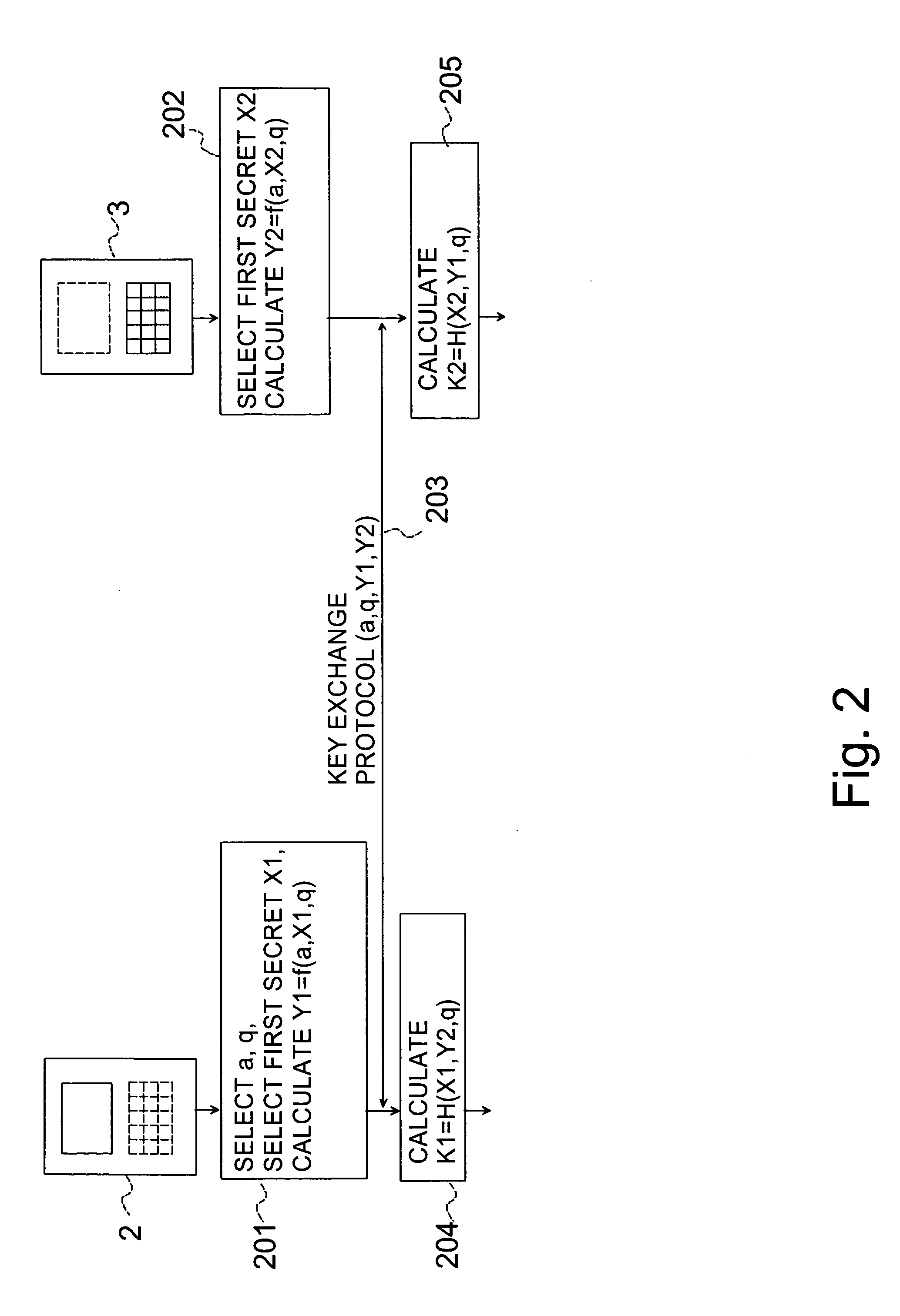Setting up a short-range wireless data transmission connection between devices
- Summary
- Abstract
- Description
- Claims
- Application Information
AI Technical Summary
Benefits of technology
Problems solved by technology
Method used
Image
Examples
first embodiment
[0031] In the following, the operation of the method according to the invention will be described in more detail with reference to the reduced flow diagram shown in FIG. 1 and using the communication system according to FIG. 4 as an example. The communication system comprises a first device 2 and a second device 3. The first device 2 is for example a portable computer (Laptop PC), a printer, a headset, a PDA device, etc. The second device 3 is for example a wireless device, such as a mobile phone, a wireless communication device, etc. It is, however, obvious that these devices 2, 3 are only non-restrictive example embodiments, and the devices 2, 3 used in connection with the invention can also differ from those presented herein. The first 2 and the second device 3 comprise first communication means 4a, 4b, such as a low power radio receiver (LPRF, Low Power RF), and second communication means 11a, 11b. The first communication means 4a, 4b are short-range radio communication means an...
second embodiment
[0038] In the present invention there is provided an extended key exchange stage. The key exchange stage is conducted (arrow 203 in FIG. 2) using for example the Diffie-Hellman key exchange protocol. Thus, in the first device 2 parameters a, q are selected, a first secret X1 is generated, and a first key Y1 is calculated, for example by means of the formula Y1=ax1 mod q (block 201). The first device 2 transmits the values a, q, Y1 to the second device 3 by the second communication means 11a. The values a, q, Y1 are received by the second communication means 11b of the second device 3. The second device 3 generates (block 202) a second secret X2, calculates a second key Y2 by means of the formula Y2=aX2 mod q and transmits the second key Y2 to the first device 2 by the second communication means 11b. The second key Y2 is received by the second communication means 11a of the first device 2. After this extended key exchange stage a shared encryption key K is calculated in both devices ...
third embodiment
[0042] In this third embodiment the checking stage is conducted in the following manner. The first device 2 selects a random string P (block 303) and transmits (block 304) the selected random string P by the second communication means 11a to the second device 3. The random string P is received (block 305) by the second communication means 11b of the second device 3. Thereafter, the second device 3 calculates a second check string c2 (block 307) on the basis of the received random string P and the secret key K2 and transmits it to the first device 2 by the second communication means 11b (block 308). The first device 2 receives (block 309) the second check string c2 and calculates a first check string c1 (block 306) on the basis of the random string P selected by the first device 2 and the secret key K1, and compares (block 310) it with the second check string c2 received from the second device 3. If the check strings c1, c2 correspond to each other, the user of the first device 2 may...
PUM
 Login to View More
Login to View More Abstract
Description
Claims
Application Information
 Login to View More
Login to View More - R&D
- Intellectual Property
- Life Sciences
- Materials
- Tech Scout
- Unparalleled Data Quality
- Higher Quality Content
- 60% Fewer Hallucinations
Browse by: Latest US Patents, China's latest patents, Technical Efficacy Thesaurus, Application Domain, Technology Topic, Popular Technical Reports.
© 2025 PatSnap. All rights reserved.Legal|Privacy policy|Modern Slavery Act Transparency Statement|Sitemap|About US| Contact US: help@patsnap.com



